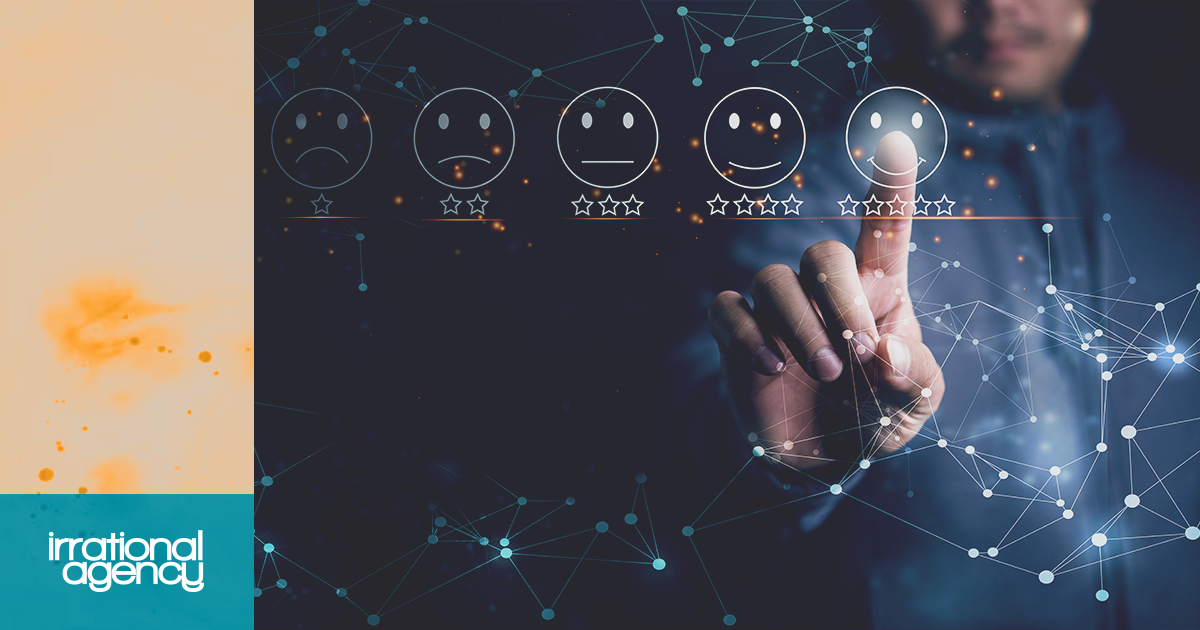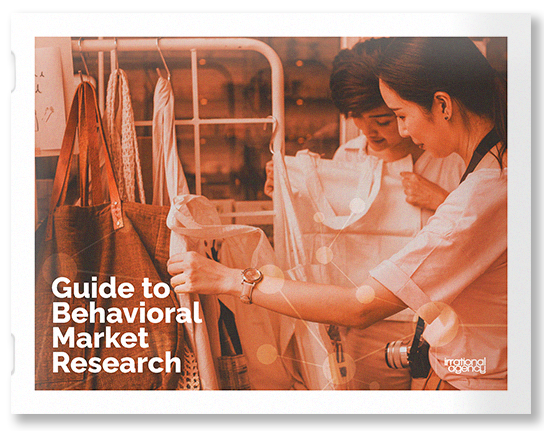
Detour Ahead: 3 Common Non-Conscious Barriers to Purchase
 Irrational Agency
Irrational Agency
You've got some great products there - congratulations! They should be absolutely dominating the marketplace. And yet… why aren't more people buying them?
Some barrier is in the way. Something is stopping customers from buying the product, even though it would be perfectly suitable for them. The tricky thing is - you can't just ask why. Consumer behavior insights actually showed that most barriers to purchase are non-conscious: people don’t actually know why they don't buy. When you ask a potential customer why they didn't choose your product, the thinking goes something like this:
"I don't really know… but I'm a logical person. There must be a good reason for my decision. Let's work out what it could be!" Your well-meaning respondent sets out to identify the most visible flaw in the product – price, pack size, some feature it doesn't have – and insists that is the reason they don't buy from you.
In reality, the problem starts at a much earlier stage in the buying process and can be evaluated with the help of consumer behavior models. There are three common non-conscious barriers that stop people from picking up and buying your product. These can be summarized as: bad stories, no stories, and imagination failure. Now, let’s explore these in more detail.
Barrier 1: Bad Stories
Sometimes, without any rational reason, your product evokes a negative narrative or experience from the customer. They might have a bad memory of it from childhood or associate it with something that brings up issues for them. Maybe they associate this product with the kind of person they definitely don't want to be (for some that might be the liberal city-dweller, for others the gun-owning small-town folk).
These narratives divert your shopper from considering your product even before they think about its benefits or costs. What makes the situation even worse is that they may not even be aware this is happening. Sometimes the story is not about your specific product, but your whole category or the sub-category your products fit within. For example, many customers have negative stories about diet soda (as others do about non-diet soda!) and automatically reject it. Others might have the same feelings about electric cars or fast-food chains, “cheap” cologne, or even national chains like Wal-Mart.
You can identify this barrier by using implicit narrative research methods and consumer behavior research models to uncover the stories unconsciously associated with the product or the category so that you can address it in your marketing and branding (and turn it into an advantage, even).

Barrier 2: No stories
What's worse than a customer with a bad story? A customer with no story at all.
Customers don't usually set out to buy products: they set out to solve their problems. Some deficiency, opportunity, or habit in their life has triggered them to look for a product that can help them fix what's missing. Their brain invents a sequence of steps to solve the problem, exploring different pathways, and mentally testing out different solutions that might work.
The steps in that pathway emerge from the consumer's hidden narratives: the stories that govern their view of how the world works. Somewhere in those stories, there should be a set of connections that link your product to the customer's problem. If these connections are missing, the customer's brain will never find its way from problem to product.
To explore whether your customers have a missing story, talk to them about the needs that you think your product could fill. Don't prompt them with the product name or category: ask how they would solve this problem. Ask when they last had the problem. What did they do? Did it work? What else did they try? What might they try next time?
All of this provides invaluable insight into the stories your customers tell about their own life problems. Your brand needs to play a positive supporting role in those stories, or you will never be chosen.
Barrier 3: Imagination failure
Before a customer tries something new, their brain wants to "preview" the experience they will have. Thinking about buying an electric car? You want to visualize what it will be like to plug it in and wait for the battery to charge. Considering a new brand of ice cream? You want to imagine what it tastes like and how the texture will feel in your mouth.
If the maker of the product doesn't give you the inputs you need to successfully imagine it, you will be left with a blank space in your head where that experience should be. A smart brand will help customers to imagine their experience in detail - perhaps using video, testimonials, or free trials.
You'll know if this barrier is stopping your product’s success if your customers can't describe the experience of using (or even buying) it in any detail. Try getting them to tell you a story of someone who uses your product, and compare it with other products they are familiar with. If your story is shorter, you lose. Some brave consumers might buy anyway, and they will hope to be pleasantly surprised by the experience - but most will opt for something safer where they know what they're going to get.
Mapping Out Category Narratives
These three non-conscious barriers all have something in common: the customer needs to have a positive story about your brand in the context of their problem. A customer problem is actually referred to as another name: a product category.
Your first step to overcome these barriers and discover consumer behavior insights is to map out the category narratives. Then, when you can see how people want to solve their problems, calculate where your product fits best and ensure it is seen in the most positive light.
Second, gather stories about your product and your competitors. Use implicit methods to get to the unconscious narratives beneath the surface. Find out whether your product triggers any bad stories that you can help rewrite; or if it evokes no stories and no imagined experiences at all.
Putting all this together, you will have a clear picture of how your customers think about your category and where your opportunities are for consumer behavior advances and applications in the marketing of your product or brand. The next step is to tell a new story – to close the imagination gap and fight back against any negative beliefs that are holding you back.
We've also compiled an extensive 30-page guide to behavioral market research that might help. Click to download.

